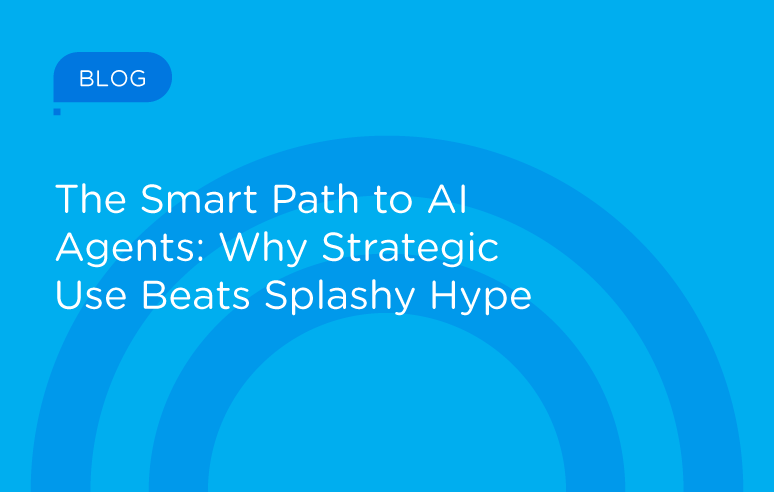Consumers want personalized experiences when interacting with brands. Personalization can lower customer effort while providing an enhanced experience. However, it has been an elusive goal considering many businesses lack a strategy on how to apply personalization in a way that maximizes the customer experience. Long story short, there’s massive room for improvement.
At the recent roundtable hosted by Interactions Chief Product Officer, Phil Gray, the focus was on enhancing personalization in customer service. Key areas of interest included goal setting, collecting customer information, understanding technology and barriers, use cases, and ensuring transparency and value in personalization.
- Insight on how to gain knowledge about your customer’s expectations for personalization.
- An understanding of why it’s imperative to set goals for personalization.
- A guide for determining what enabling technologies will make the greatest impact.
- Examples of key use cases where personalization will move the needle on customer effort, or increasing revenue, etc.
- Insight on how to break down roadblocks.
Essential Steps for Implementing Effective Personalization
Personalization shouldn’t be pushed to the wayside; consumers are increasingly demanding it. To get started, here are six essential steps to follow:
Set Clear Goals
- Define specific objectives for personalization (e.g., improving customer loyalty, reducing customer effort).
- Determine how to measure success (e.g., customer effort score, ROI).
Collect Customer Information
- Use surveys, feedback forms, and direct interactions to gather customer insights.
- Segment customers based on collected data to tailor experiences.
Leverage Technology
- Invest in CRM systems and other technologies that enable data aggregation and analysis.
- Explore AI and machine learning tools for predictive analytics and personalized recommendations.
Ensure Transparency
- Communicate clearly with customers about how their data will be used.
- Allow customers to control their data preferences and opt-in for personalization features.
Identify and Mitigate Barriers
Assess potential risks associated with data usage and personalization.
Implement multi-factor authentication and other security measures to protect customer data.
Develop Use Cases
Identify high-impact scenarios where personalization can improve the customer experience, such as personalized recommendations, targeted marketing, and proactive customer support.
Best Practices for Successful Personalization
Incorporating best practices is crucial for successful personalization:
- Foster Collaboration: Encourage collaboration between marketing, sales, and customer service teams to ensure a unified approach.
- Customer Segmentation: Deliver relevant and personalized experiences based on customer profiles and behaviors.
- Continuous Feedback Loop: Continuously gather customer insights and adjust personalization strategies accordingly.
- Ethical Data Use: Adhere to data privacy regulations and maintain transparency with customers about data usage.
- Pilot Programs: Test personalization strategies on a smaller scale before a full rollout to ensure effectiveness.
- Regular Measurement: Regularly measure the impact of personalization efforts and make necessary adjustments to improve effectiveness.
By following these steps and best practices, businesses can effectively implement personalization strategies, enhancing customer experiences and achieving better business outcomes.
Key Takeaways
Goal Setting: One of the primary takeaways from the roundtable was the importance of setting clear goals for personalization. Businesses need to define what they want to achieve, whether it’s improving customer loyalty or reducing customer effort, and determine how to measure success through metrics like ROI or customer effort scores. Without clear goals, it’s challenging to gauge the effectiveness of personalization efforts.
Customer Information: Another crucial aspect discussed was the need to gather detailed insights from customers to understand their needs and preferences. This information is the foundation of any personalization strategy. By using surveys, feedback forms, and direct interactions, businesses can collect valuable data that helps tailor personalized experiences for their customers.
Technology: The discussion also emphasized the importance of leveraging the right technologies. Assessing the technological requirements and potential barriers is essential for successful implementation. Investing in CRM systems and exploring AI and machine learning tools can significantly enhance data aggregation, analysis, and predictive capabilities, making personalization more effective and scalable.
Transparency and Trust: Building trust with customers through transparency in data collection and usage was another key point. Customers should feel confident that their data is being used ethically and beneficially. Clear communication about how their data will be used and allowing them to control their preferences are vital steps in this direction.
Barriers and Risks: The roundtable addressed the need to identify and mitigate potential barriers and risks associated with personalization. This includes ethical considerations around data usage and balancing personalization with privacy. Understanding and addressing these challenges is crucial for maintaining customer trust and ensuring the long-term success of personalization initiatives.
Use Cases: Identifying specific use cases where personalization can significantly impact customer experience was highlighted as a practical step. Examples include personalized recommendations, targeted marketing, and proactive customer support. These use cases can help businesses focus their efforts where they can achieve the most significant results.
Mastering Personalization for Superior Customer Service
To enhance personalization in customer service, it is crucial to set clear goals and measurement criteria, gather and segment customer information, leverage technology, ensure transparency, and identify potential barriers and risks. Collaboration between departments, such as marketing and customer service, along with the ethical use of data, is essential. Implementing pilot programs, continuously gathering feedback, and making necessary adjustments will help in creating effective personalization strategies. Focusing on high-impact use cases can significantly improve customer experiences and business outcomes.



